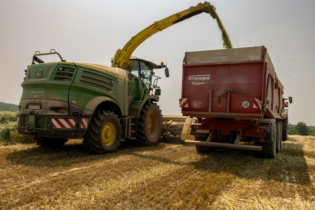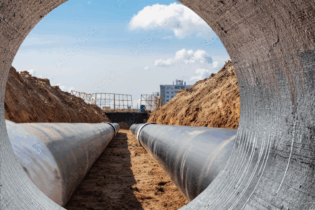Groundwater management is critical to keeping water supplies available and safe for future generations.
By Dr Roger Parsons Groundwater is the most extracted material in the world, providing about half of the drinking water supply worldwide. Locally, it might be considered less important, given that only 13% of all water used comes from aquifers. However, most of the drier western part of the country is dependent on groundwater for its water supplies. More than 400 cities, towns and villages in this country use groundwater – either as a sole source or in conjunction with surface water supplies. And almost all rural water supply schemes are groundwater driven, with the development of springs and shallow boreholes fitted with handpumps being a key. Recent droughts in the Southern Cape (2009-10), Western Cape (2016-19) and Eastern Cape (ongoing since 2015) have seen municipalities, businesses and individuals turn to groundwater in the face of potentially failing municipal water supplies. Its ubiquitous nature and the ability of most rock types to store and transmit water make groundwater exploration an obvious mitigation action in many instances. It is a renewable resource and resilient against the effects of drought, but it needs to be used within its sustainable limits. Challenges The use of groundwater is not without challenges. Unlike a dam where water is drawn at a single point, groundwater is unevenly distributed underground in both quality and quantity. It has to be abstracted from multiple locations, transported to a single point and then reticulated to users. Furthermore, groundwater does not benefit from the economies of scale when compared to large dams, but the cost of development of groundwater supplies is typically much less than its surface water counterparts. The management of groundwater schemes is typically more labour-intensive, requiring regular interventions to keep the systems running smoothly. Possibly the biggest challenge related to the development and use of groundwater is that it cannot be seen. It is invisible to those who haven’t specialised in this field and, as a result, is poorly understood. In their book, Groundwater Around the World, Margat and Van der Gun observe that what most people know about groundwater is not in proportion to the use they make of it. Groundwater resources are often poorly assessed and hardly managed. In some parts of the world, the resource is excessively exploited and wasted, but elsewhere groundwater is underestimated and unused. Department of Water and SanitationThe Department of Water and Sanitation (DWS) used to have a division of experienced hydrogeologists who developed groundwater resources and provided support to municipalities. At the time, it was also the training ground for most hydrogeologists in the country.
The DWS has been restructured around the National Water Act (No. 36 of 1998) and this expertise now sits in the private sector and, with only one or two exceptions, municipalities are devoid of this expertise – even when their entire water supply is sourced from underground. During the drought that resulted in Cape Town facing ‘Day Zero’, the Western Cape Provincial Government assigned hydrogeologists to each support four or five municipalities as they sought to mitigate falling dam levels and dry taps. The purpose of this was to guide better decision-making and promote a better return on their investment when contemplating groundwater development or expansion. In my opinion, this was a wise move, but it needs to be extended if headway is to be made against the lack of groundwater management at municipal level. A recent visit to a R150 million groundwater scheme in the Eastern Cape reminded me of the sorry state of affairs of groundwater management. Five boreholes are being used to supply groundwater to the town, all fitted with flow meters. This is a requirement of the DWS, either as a licence condition or under various regulations governed by them. The purpose of the flow meter was not clear, as the borehole was being pumped at 7.8 ℓ/s when the pumping rate recommended by the hydrogeologist was 5.0 ℓ/s. Despite the cost of the scheme, R50 000 could not be found to install data loggers in each borehole. Data loggers are used to measure the groundwater level over time, which in turn provides a measure of the reaction of the aquifer to pumping and the sustainability of the abstraction. Operating a production borehole without this information is like driving a car without a fuel gauge. It is guaranteed that you will run out of fuel at some stage. In this example, the borehole may continue to deliver 7.8 ℓ/s for a day, a week or even a month but, at some point, the borehole will fail and the residents of the town will be without water. Groundwater will probably be blamed and declared unreliable. Managing groundwater Managing groundwater is not complicated. A set of operating rules (like rate of pumping) needs to be specified from the outset. The diligent collection of data and having it reviewed by a hydrogeologist is key to successfully managing any groundwater scheme. This requires approximately eight hours of their input each year. It is also prudent to include a hydrogeologist in the commissioning process to check that the scheme has been implemented correctly, but thereafter the review can be done every 6 to 12 months. The availability of hydrogeological capacity is not a limitation. The Ground Water Division has more than 300 signed-up members, most of whom are skilled and experienced in groundwater management. Many graduates that have completed groundwater-focused courses battle to find employment. A programme where an intern is tasked with managing four or five municipal groundwater supply schemes is an ideal way for young hydrologists to gain work experience while overcoming the lack of groundwater management. We just need visionary leadership.







